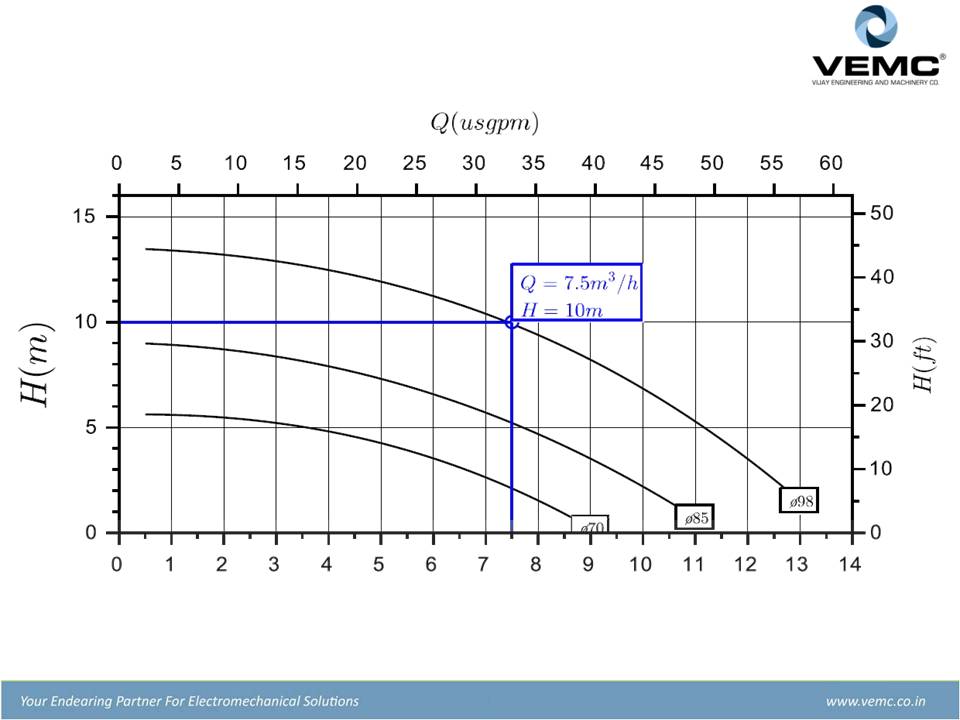
If you own a pump, you should be able to evaluate your pump’s performance and ensure that it’s ideal for the purpose you installed it for. This is done by plotting points on a graph and drawing a pump characteristic curve. This curve provides insights into the relationship between the total head (i.e. how much kinetic energy a pump can generate) and flow rate.
There are 3 key points on this curve that we often consider (click on them to know more):
- Shut off head
- Best Efficiency Point
- Maximum Flow Point
Another aspect of the curves that we consider is what kind of curves they are:
- Normal curves: Here, the head is seen to be decreasing at a rapid pace while the flow is seen to be increasing. This curve type is steep and gives you more control, which makes it more sought-after. This is because a small change in flow will result in a sizeable drop in pressure.
- Flat curves: Here, the head decreases at a very slow pace as the flow increases. This type of curve is ideal for sprinkler systems because here, a significant change in flow is coupled with a small change in head.
- Drooping curves: In this case, the curve is similar to a normal curve with the exception of the fact that the head rises and then falls as it nears the shut-off head point. This curve type should be avoided.
When it comes to owning water pumps, be it centrifugal pumps, submersible pumps or any other kind of pump, it is essential for you to evaluate the pumps’ characteristic curves. Being among the most reliable pump dealers in India, we, at Vijay Engineering and Machinery Company, only sell premium-quality Kirloskar pumps. These pumps only deliver the best and are hassle-free once installed. We complement our products with information to help you seamlessly install and maintain efficient pumping systems. Want to know more about our pumps? Head over to our blog section and uncover a plethora of topics we explore!

